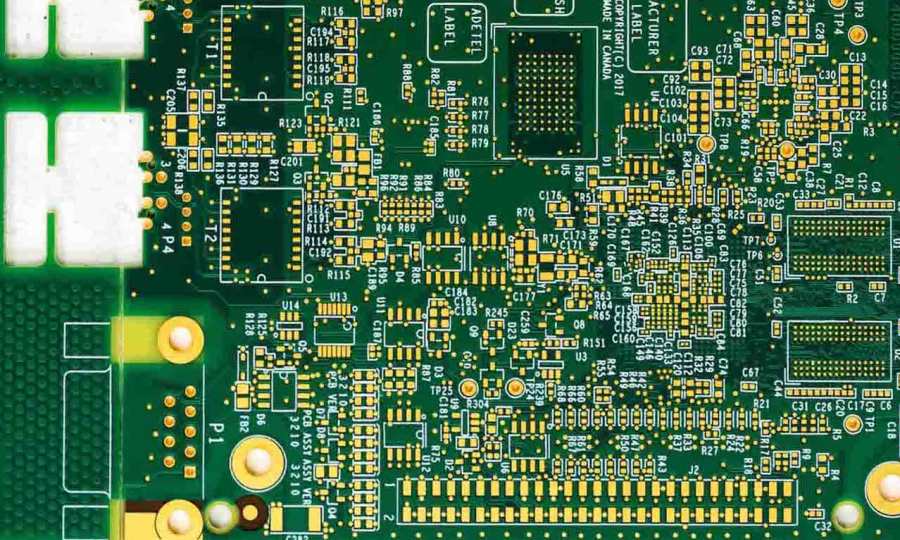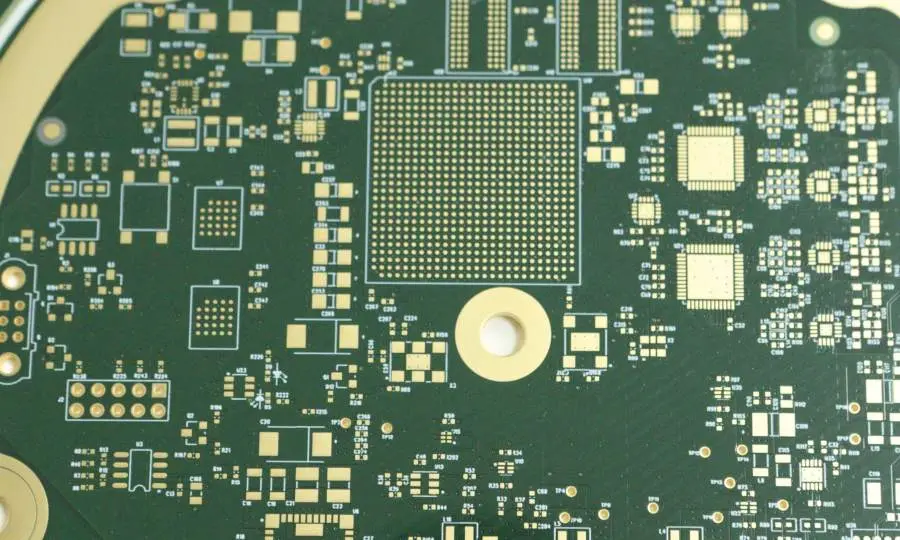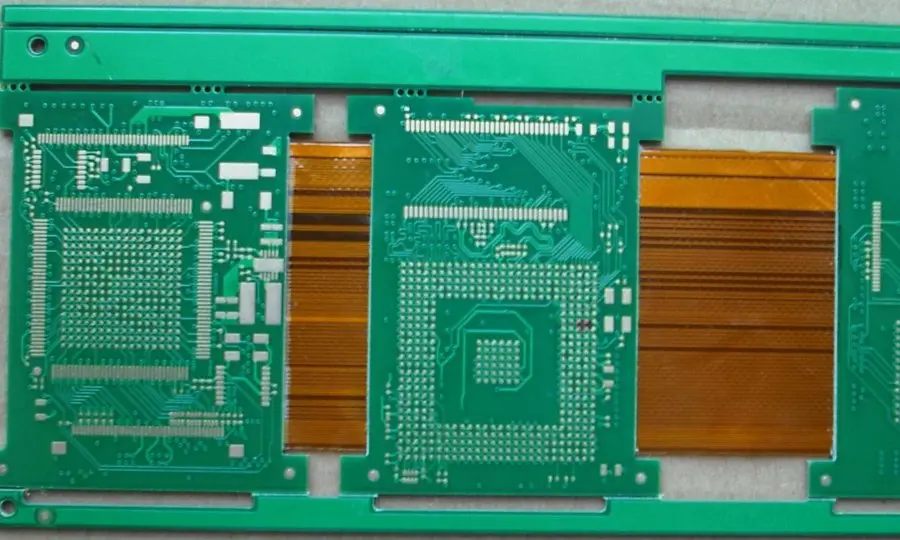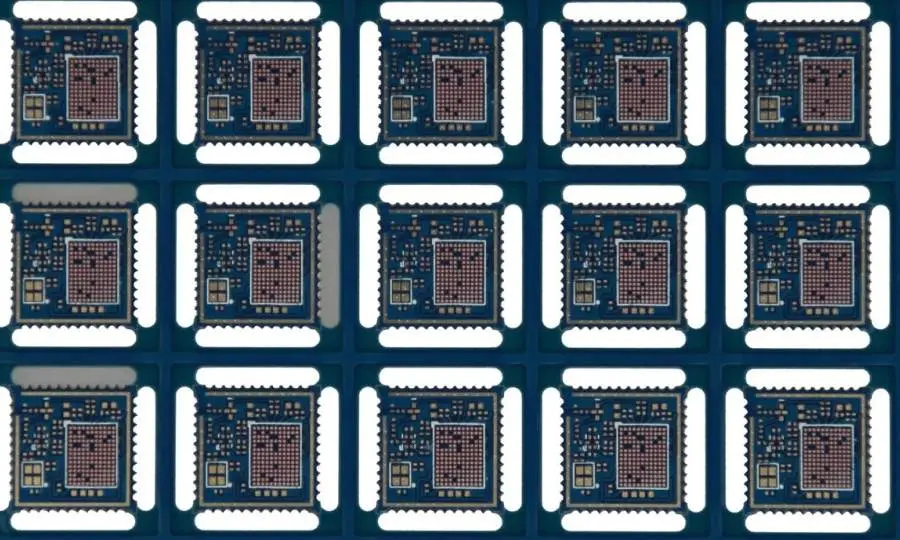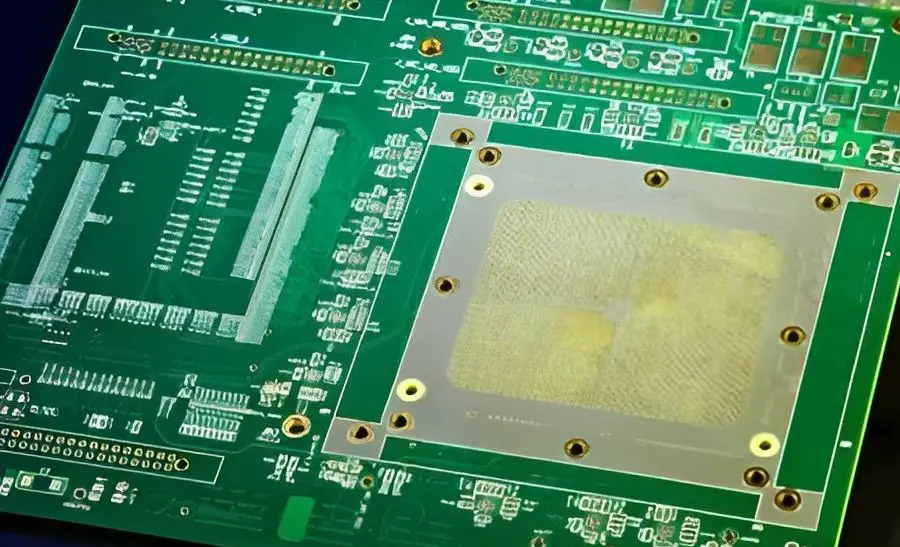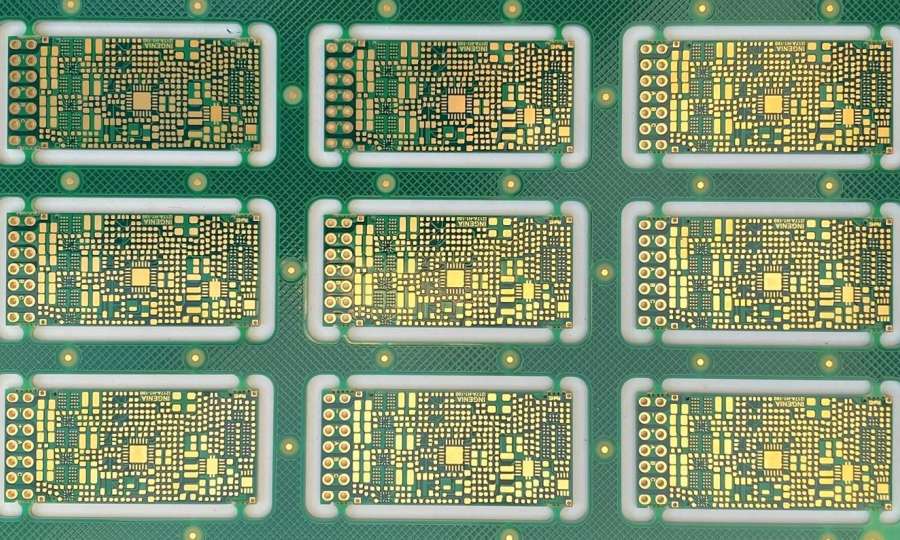HDI PCB: Complete Guide to High Density Interconnect Circuit Boards
RayMing manufactures and assembles high-density interconnect PCBs with blind, buried, and micro-vias, built-up laminations, and the highest signal integrity in the industry.
HDI PCB (High-Density Interconnect Printed Circuit Board) represents the pinnacle of modern circuit board technology, revolutionizing how electronic devices are designed and manufactured. These advanced circuit boards utilize cutting-edge techniques like laser-drilled microvias, sequential build-up lamination, and ultra-fine traces to achieve unprecedented miniaturization while enhancing electrical performance.
What is HDI PCB?
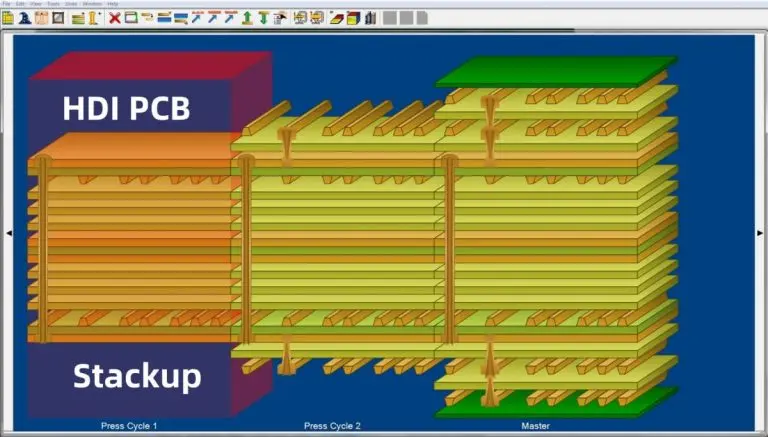
HDI PCB is defined by IPC-2226 as a printed circuit board with a higher wiring density per unit area than conventional printed circuit boards (PCB). They have finer lines and spaces ≤ 100 µm / 0.10mm, smaller vias (<150 µm) and capture pads <400 µm / 0.40mm, and higher connection pad density (>20 pads/cm²) than employed in conventional PCB technology.
Key Characteristics of HDI PCB:
- Microvias: Laser-drilled holes with diameters as small as 50-150μm (0.002″-0.006″)
- Blind and Buried Vias: Enable layer-to-layer connections without spanning the entire board
- Ultra-Fine Traces: Line widths and spaces down to 50μm or smaller
- Sequential Build-up: Layer-by-layer construction for complex stackups
- Via-in-Pad Technology: Allows component placement directly over filled vias
HDI PCB We Served
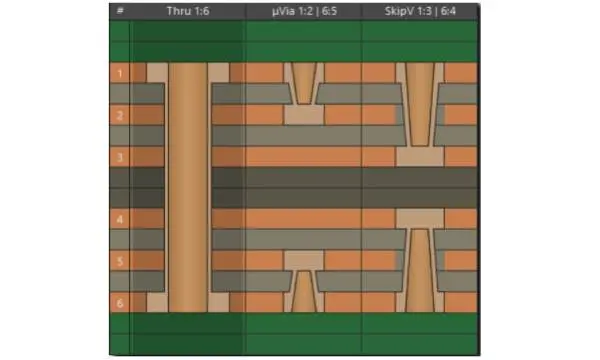
1+N+1 HDI Stack up
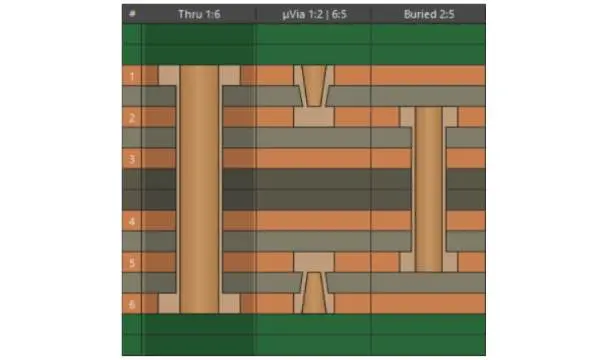
2+N+2 HDI Stack up

3+N+3 HDI Stack up
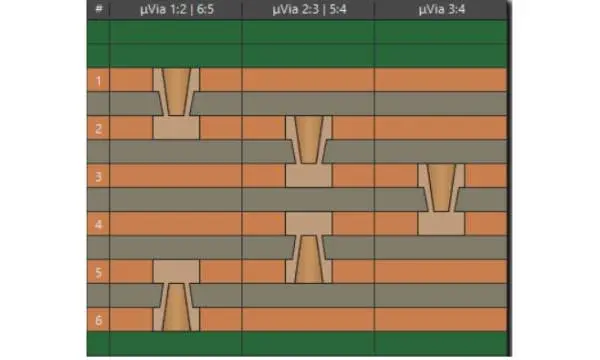
ELIC Anylayer Stackup
HDI PCB Types and Structures
Type I HDI (1+N+1)

The most basic HDI configuration with one build-up layer on each side of a conventional core.
Specifications:
- Single layer of microvias on top and bottom
- Supports BGA pitches down to 0.4mm
- Cost-effective entry-level HDI solution
- Typical applications: Basic smartphones, GPS devices, memory cards
Type II HDI (2+N+2)

Advanced structure with two build-up layers per side, enabling higher component density.
Features:
- Staggered or stacked microvia configurations
- Enhanced routing capabilities for complex designs
- Supports BGA pitches down to 0.3mm
- Applications: High-end smartphones, tablets, game consoles
Type III HDI (3+N+3 and beyond)

Ultra-high-density configurations for the most demanding applications.
Advanced Capabilities:
- Multiple stacked microvia layers
- Any-layer interconnect (ELIC) structures
- Support for 0.25mm BGA pitches and smaller
- Applications: 5G infrastructure, AI processors, advanced automotive systems
HDI PCB Manufacturing Process
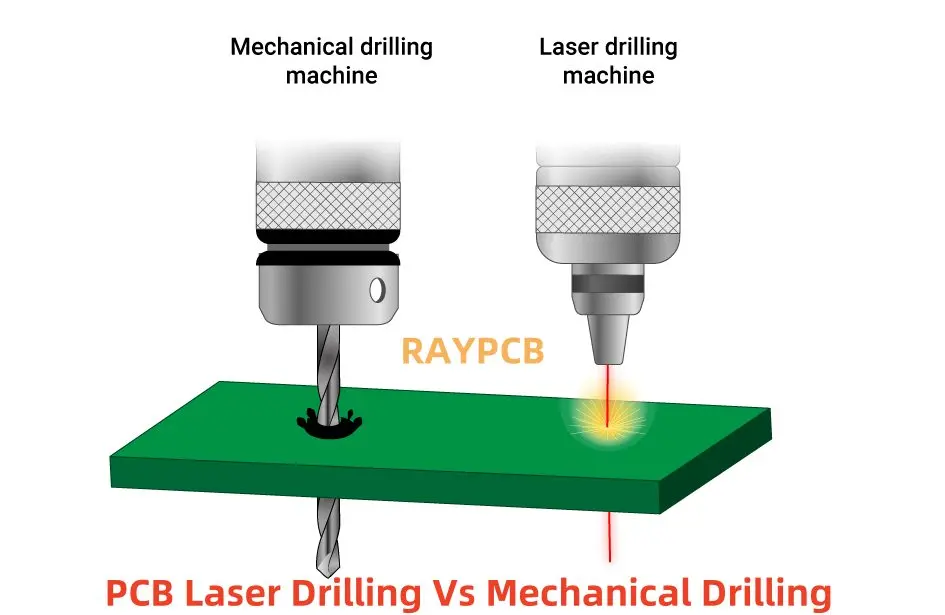
1. Core Preparation
- High-quality substrate material selection
- Precise thickness control for optimal impedance
- Surface preparation for optimal adhesion
2. Sequential Build-Up Lamination
The HDI manufacturing process differs from the traditional PCB manufacturing process in a few simple yet important ways. An important point here is that fabricator limitations will constrain design freedom and will set limits as to how the board can be routed.
Key Steps:
- Layer-by-layer construction
- Prepreg and copper foil lamination
- Precise temperature and pressure control
- Multiple lamination cycles for complex structures
3. Laser Microvia Drilling
- CO2 laser drilling for larger microvias (100-150μm)
- UV laser drilling for ultra-fine features (<100μm)
- Real-time monitoring for consistent hole quality
- Optimal aspect ratios (depth:diameter) of 1:1 or less
4. Microvia Metallization
- Electroless copper deposition
- Electroplating for optimal conductivity
- Via filling with conductive or non-conductive materials
- Planarization for via-in-pad applications
HDI PCB Materials
Advanced Dielectric Materials
- Low-Loss Materials: For high-frequency applications (5G, automotive radar)
- Thermally Conductive Substrates: Enhanced heat dissipation
- Ultra-Thin Prepregs: Down to 25μm thickness for fine layer control
Specialty Copper Foils
- Low-Profile Copper: Reduces surface roughness for fine lines
- Reverse-Treated Foil: Improved adhesion for thin dielectrics
- Ultra-Thin Copper: Down to 9μm (1/4 oz) for fine trace definition
HDI PCB Design Guidelines

Critical Design Parameters
- Minimum Trace Width: 50μm (2 mils) for advanced HDI
- Minimum Space: 50μm (2 mils) between conductors
- Microvia Size: 75-125μm diameter typical
- Via Aspect Ratio: Maximum 1:1 for reliable plating
- Annular Ring: Minimum 25μm for manufacturing reliability
Best Practices for HDI Design
- Stackup Optimization: Balance impedance control with manufacturability
- Component Placement: Prioritize high-speed signals for shortest paths
- Thermal Management: Strategic via placement for heat dissipation
- Design for Manufacturing: Early collaboration with HDI specialists
- Signal Integrity: Minimize crosstalk through proper layer arrangement
Advantages of HDI PCB Technology
1. Dramatic Space Savings
Using HDI technology during design, it is possible to reduce an 8 layer through-hole PCB to a 4 layer HDI microvia technology packed PCB. The wiring capabilities of a well-designed HDI 4 layer PCB can achieve the same or better functions as that of a standard 8 layer PCB.
Space Optimization Benefits:
- 30-70% size reduction compared to traditional PCBs
- Higher component density enables compact product designs
- Reduced board thickness through layer count optimization
2. Enhanced Electrical Performance
HDI technology incorporates via-in-pad and blind-via techniques. These techniques help bring components closer to each other, reducing the length of signal paths. HDI technology eliminates stubs caused by through-holes, reducing signal reflection and improving signal quality.
Performance Improvements:
- 40% faster signal transmission due to shorter paths
- Reduced electromagnetic interference (EMI)
- Better impedance control and signal integrity
- Lower power consumption through optimized routing
3. Superior Reliability
Due to their smaller aspect ratio, microvias offer better reliability compared to typical through-hole vias. They are more robust than through-holes and employ superior materials and components, resulting in excellent performance for HDI (High-Density Interconnect) technology.
Reliability Advantages:
- Enhanced thermal performance
- Improved mechanical strength
- Better resistance to thermal cycling
- Reduced failure rates in demanding environments
4. Cost-Effectiveness
Despite higher manufacturing costs per square inch, HDI technology often reduces total system costs through:
- Fewer layers required (60% reduction typical)
- Smaller enclosures and reduced material usage
- Simplified assembly processes
- Enhanced product functionality
HDI PCB Applications
Consumer Electronics
HDI PCB is widely used to reduce the weight and overall dimensions of products, as well as to enhance the electrical performance of the device. The high-density PCB is regularly found in mobile phones, touch-screen devices, laptop computers, digital cameras and 4G network communications.
Key Applications:
- Smartphones and Tablets: Enabling ultra-thin designs with advanced features
- Wearable Devices: Smartwatches, fitness trackers, AR/VR headsets
- Laptops and Ultrabooks: High-performance computing in portable form factors
- Gaming Consoles: Powerful processing in compact entertainment systems
Automotive Electronics
Modern automotive industry, however, depend more on electronic applications that are playing an increasingly significant and potential role in automotives. Automatic electrization is all used on handling, sensing, information transmission and recording that can never be achieved without printed circuit boards (PCBs).
Automotive HDI Applications:
- Advanced Driver Assistance Systems (ADAS): Radar, LiDAR, camera modules
- Infotainment Systems: High-resolution displays, connectivity modules
- Electric Vehicle Controls: Battery management, motor controllers
- Autonomous Driving: AI processors, sensor fusion systems
Medical Devices
Critical Medical Applications:
- Diagnostic Equipment: Portable ultrasound, patient monitoring systems
- Implantable Devices: Pacemakers, neural stimulators, glucose monitors
- Surgical Instruments: Minimally invasive surgical tools, robotic systems
- Imaging Systems: CT scanners, MRI equipment, endoscopes
Telecommunications and 5G
Next-Generation Communications:
- 5G Base Stations: High-frequency RF modules, beamforming arrays
- Network Infrastructure: Routers, switches, fiber optic equipment
- Satellite Communications: Compact, high-performance transceivers
- IoT Devices: Connected sensors, smart city infrastructure
Aerospace and Defense
Mission-Critical Applications:
- Avionics Systems: Flight controls, navigation, communication
- Satellite Electronics: Space-qualified, radiation-resistant designs
- Defense Systems: Secure communications, electronic warfare
- Unmanned Vehicles: Drones, autonomous systems
HDI PCB Design Challenges and Solutions
Challenge 1: Thermal Management
Issue: Compact designs can lead to heat concentration and thermal stress.
Solutions:
- Strategic thermal via placement
- Advanced materials with high thermal conductivity
- Copper coinning for enhanced heat spreading
- Optimized component placement for thermal paths
Challenge 2: Signal Integrity
Issue: High-density routing can increase crosstalk and signal degradation.
Solutions:
- Controlled impedance design
- Proper layer stackup planning
- Differential pair routing optimization
- Guard traces and ground plane management
Challenge 3: Manufacturing Complexity
Issue: Tighter tolerances require specialized equipment and processes.
Solutions:
- Early Design for Manufacturing (DFM) collaboration
- Adherence to fabricator capability guidelines
- Comprehensive design rule checking
- Progressive prototyping approach
Challenge 4: Cost Management
Issue: Advanced processes can increase manufacturing costs.
Solutions:
- Optimal layer count selection
- Standard via sizes when possible
- Volume-based cost optimization
- Technology roadmap alignment
HDI PCB Industry Standards
Key Standards and Specifications
- IPC-2315: HDI structures and microvia design guide
- IPC-2226: Material characterization and design rules
- IPC-4104: Dielectric material specifications
- IPC-6016: General specifications for HDI substrates
- IPC-A-600: Acceptability standards for printed boards
Quality Certifications
- ISO 9001:2015 quality management
- IATF 16949 automotive quality
- AS9100 aerospace standards
- ISO 13485 medical device quality
Future Trends in HDI PCB Technology
Ultra-Fine Feature Development
Ultra HDI PCBs has a conductor width & isolation distance below 50 µm, dielectric thickness below 50 µm & other characteristics
Emerging Technologies:
- Sub-50μm line widths for extreme miniaturization
- Embedded components for ultimate integration
- 3D printing integration for rapid prototyping
- Flexible-rigid HDI for wearable applications
Advanced Materials Innovation
- Low-loss 5G materials for millimeter-wave frequencies
- Thermally conductive dielectrics for power electronics
- Recyclable substrates for environmental sustainability
- AI-optimized material selection for performance optimization
Manufacturing Technology Evolution
- Additive manufacturing processes for complex structures
- AI-driven quality control for zero-defect production
- Real-time process monitoring for consistent results
- Automated design optimization tools
Selecting an HDI PCB Manufacturing Partner
Critical Evaluation Criteria
Technical Capabilities
- Layer count capacity: Up to 30+ layers for complex designs
- Minimum feature sizes: Sub-75μm capabilities
- Advanced via technologies: Stacked, filled, and via-in-pad
- Material expertise: Latest high-performance substrates
Quality Systems
- Comprehensive testing: Electrical, mechanical, and reliability
- Process control: Statistical process control and traceability
- Industry certifications: Relevant quality standards compliance
- Design support: DFM analysis and optimization services
Production Capabilities
- Capacity and scalability: From prototype to volume production
- Lead time performance: Consistent delivery schedules
- Cost competitiveness: Value-based pricing strategies
- Global presence: Local support with international reach
HDI PCB Cost Optimization Strategies
Design-Based Cost Reduction
- Optimal Layer Count: Balance functionality with manufacturing cost
- Standard Via Sizes: Use fabricator-preferred dimensions
- Material Selection: Choose cost-effective high-performance materials
- Panelization: Optimize panel utilization for volume production
Volume Considerations
- Prototype vs. Production: Different cost structures
- Annual volume commitments: Long-term partnership benefits
- Technology roadmaps: Future-proofing design decisions
- Supply chain optimization: Material cost management
Quality Assurance in HDI PCB Manufacturing
Critical Testing Parameters
- Electrical Testing: Continuity, isolation, impedance verification
- Mechanical Testing: Peel strength, thermal cycling, vibration
- Reliability Testing: Temperature cycling, humidity, life testing
- Microsection Analysis: Layer thickness, via quality, registration
Process Control Measures
- In-process monitoring: Real-time parameter tracking
- Statistical process control: Continuous improvement methodologies
- Traceability systems: Complete production history tracking
- Failure analysis: Root cause analysis and corrective actions
Conclusion
HDI PCB technology has transformed from a premium option to an essential requirement for modern electronics. As the world of technology has evolved, so has the need to pack more capabilities into smaller packages. PCBs designed using high-density interconnect (HDI) techniques tend to be smaller as more components are packed in a smaller space.
The technology offers compelling advantages including:
- 30-70% size reduction while maintaining or improving functionality
- Enhanced electrical performance through optimized signal paths
- Superior reliability through advanced materials and processes
- Cost-effectiveness through system-level optimization
As emerging technologies like 5G, AI, electric vehicles, and IoT continue to drive demand for smaller, faster, and more capable electronics, HDI PCB technology will remain at the forefront of innovation. Success in implementing HDI designs requires early collaboration with experienced manufacturers, adherence to design best practices, and a thorough understanding of the unique challenges and opportunities this technology presents.
Whether developing next-generation consumer electronics, advanced automotive systems, or cutting-edge medical devices, HDI PCB technology provides the foundation for competitive, innovative products in today’s demanding marketplace.
Frequently Asked Questions
Q: What are the typical via sizes in HDI PCBs? A: HDI PCBs typically use microvias with diameters ranging from 50-150μm (2-6 mils), significantly smaller than traditional PCB vias of 250-300μm.
Q: How much smaller can HDI PCBs be compared to traditional PCBs? A: HDI technology can reduce board size by 30-70% while maintaining or improving functionality, depending on the application and design complexity.
Q: Which industries benefit most from HDI technology? A: Consumer electronics, automotive, medical devices, aerospace, and telecommunications industries see the greatest benefits from HDI technology’s miniaturization and performance advantages.
Q: Are HDI PCBs more expensive than traditional PCBs? A: While HDI PCBs have higher per-square-inch costs, the overall system cost often decreases due to smaller enclosures, reduced assembly complexity, and improved performance.
Q: What design software is recommended for HDI PCB design? A: Professional tools like Altium Designer, Cadence Allegro, and Mentor Graphics provide HDI-specific features including microvia design rules and advanced stackup management.
Q: How long does HDI PCB fabrication typically take? A: HDI PCB fabrication typically requires 2-4 weeks depending on complexity, layer count, and manufacturer capabilities, longer than traditional PCBs due to sequential build-up processes.
Q: What surface finish is best for HDI applications? A: ENIG (Electroless Nickel Immersion Gold) is preferred for HDI applications due to its excellent solderability, wire bonding capability, and fine-pitch compatibility.

